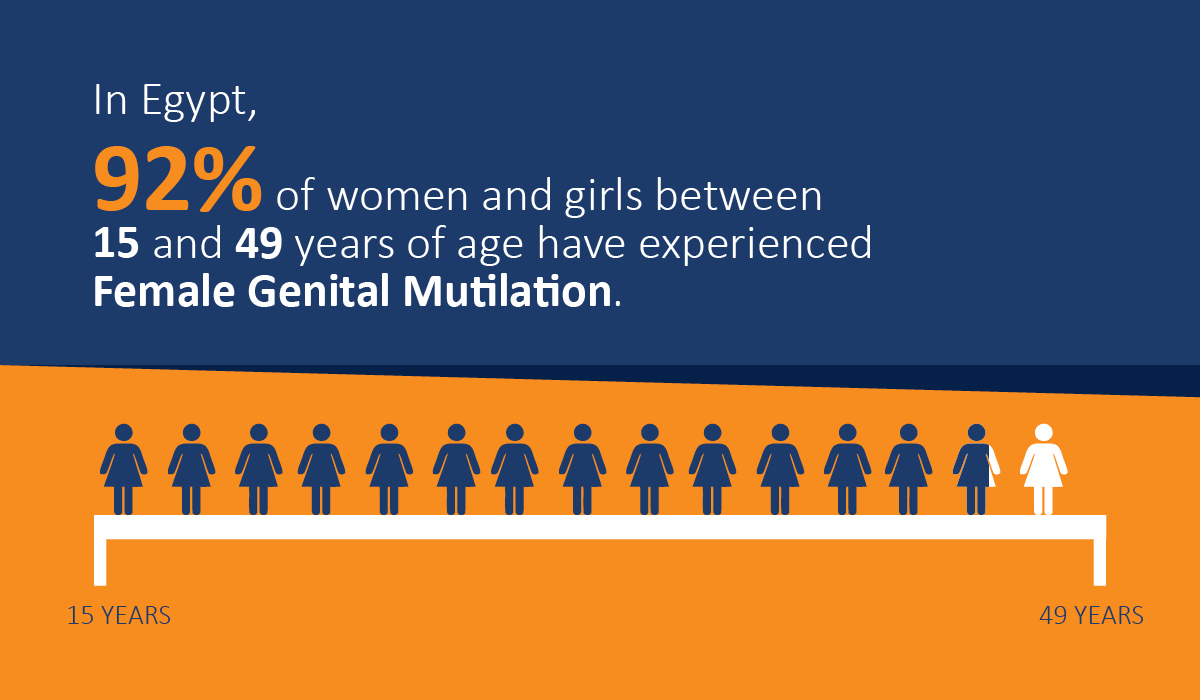Voices of women survivors of violence: Mona's "purification".
Date:

Pinned to the floor, her arms bound from behind and her legs forced open, the 10 year old Mona looked on in horror as an old wrinkled woman approached with a small razor in her hand. Today, more than thirty years later, Mona still remembers everything from the sound of her own screams to the pain she felt when she was circumcised.
They did not call it Female Genital Mutilation when they told Mona she was about to have it. They told her a woman was going to come over to “purify” her. She already knew it was painful because she heard the screams from her neighbors’ house one day and she was told it was because the little girl was being “purified”.
“I laughed, but then my neighbor said to me: don’t laugh, your turn is coming soon,” Mona recalled, “I did not want to do it. But back then, if a girl said no, she was beaten to an inch of her life and then she was purified nonetheless.”
Mona is one of millions of Egyptian women who were subjected to Female Genital Mutilation. In fact, 92 percent of all Egyptian women between the age of 15 and 49 have had the same experience. Illegal in Egypt since 2008, Female Genital Mutilation is still widely practiced now supported by a common social belief that there is a medical need for some girls to undergo the procedure especially with some doctors advocating this theory. Progress has been made due to several national campaigns to raise awareness which shows in the most recent statistics on the prevalence among girls between 15 and 17 years of age at 61 percent down from 74 per cent in 2008.
61 percent is still high though. And it is only part of a cycle of violence against girls stemming from negative social gender stereotypes. Circumcision was not the end of the road for Mona. A year after her horrific experience, her father made her quit school when she was 11.
“My aunt came to our house and said my breasts were growing,” Mona recalled, “and so, my father said I had to stay home from that day on.”
When Mona married at the age of 19, she had already made a vow never to let her future daughters go through the same experience. But her mother in law, her siblings, her brothers and sisters in law and almost all her friends were all pressuring her to “purify” her two daughters.
“They don’t understand how tragic it is,” Mona said while recalling the problems she had with her husband at the beginning of their marriage because of the impact the experience had on her sex life.
“For years, I felt nothing”, Mona whispered with a muffled laugh, “Whenever I had sex with my husband, all I could think of was the cooking I needed to do.”
It was not until Mona accidently read a book about Female Genital Mutilation that she even understood that it was the reason for her problems. Her husband was supportive and with more research, they are now able to lead a healthier married life. But even with that experience in mind, all the things she heard from her family made her worry for her daughters.
“It is a culture they force into your head. They said that unpurified girls cannot control themselves and would not be virtuous,” Mona said, “But I believed that if I raise my girls well, that would be enough. How was I supposed to subject my girls to this panic, this fear, this feeling that you are not human, that you are like a chicken being taken for the slaughter? I was too young to understand but now I know how cruel this was.”
Mona was lucky because her husband was supportive. If he had not listened, and if he had not been willing to protect his daughters, they would have had the same experience.
Had he insisted on having his daughters circumcised, “nobody would have supported me in opposing him”, Mona recalled.
When asked about what could solve the problem in her community, Mona did not hesitate: “Awareness. I did not even know that it was illegal until now.”